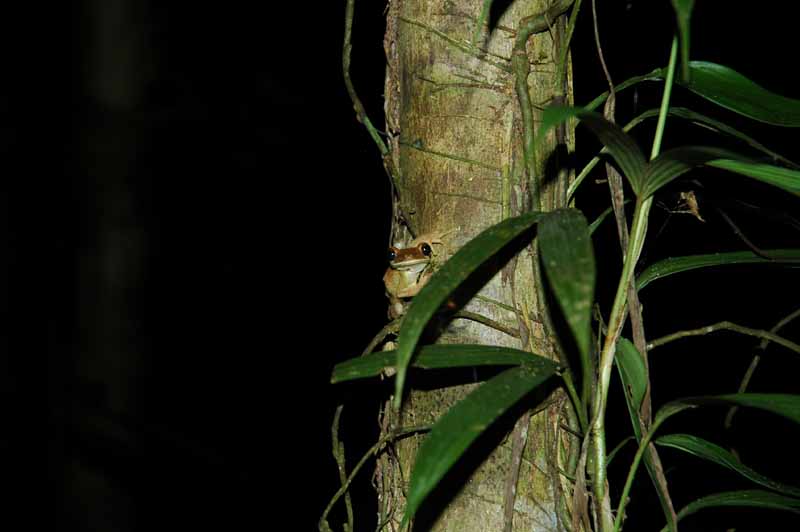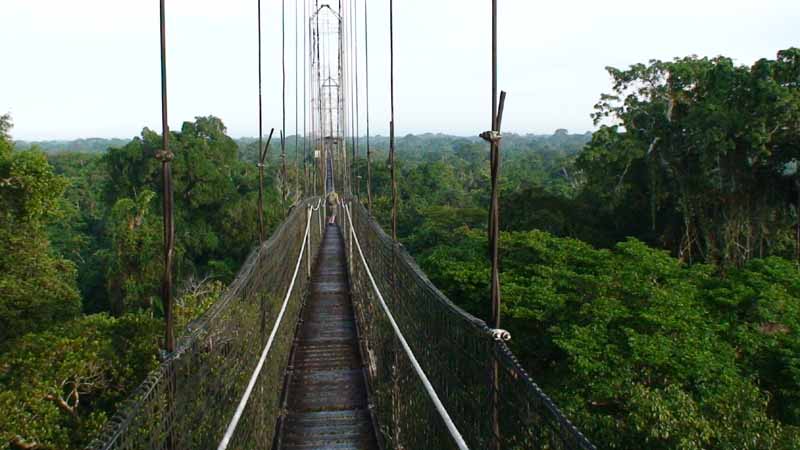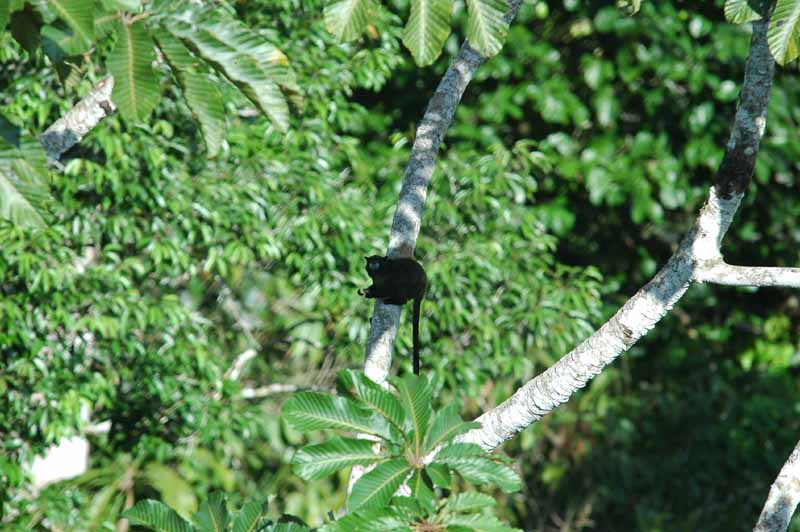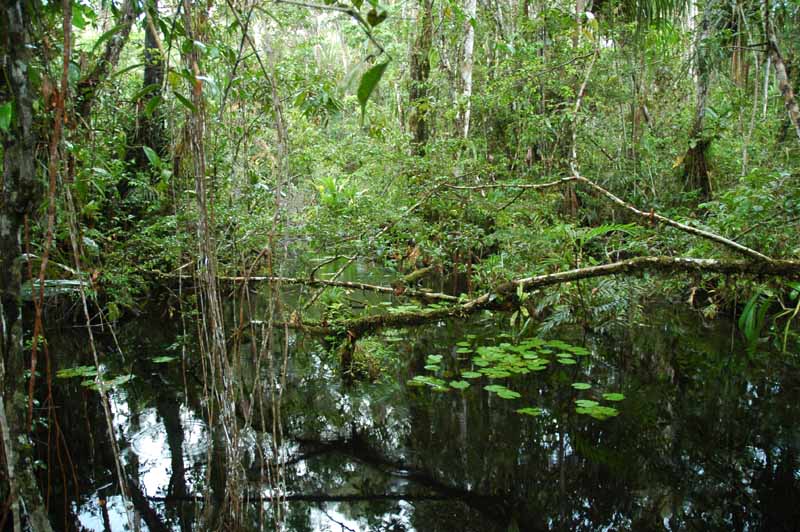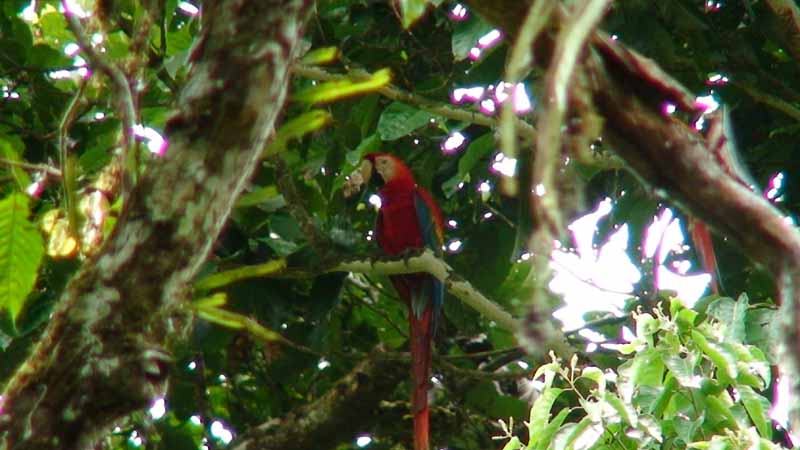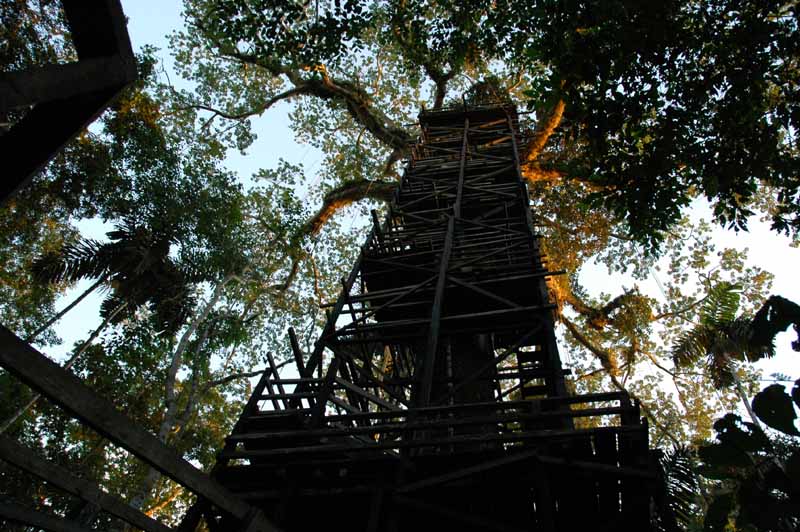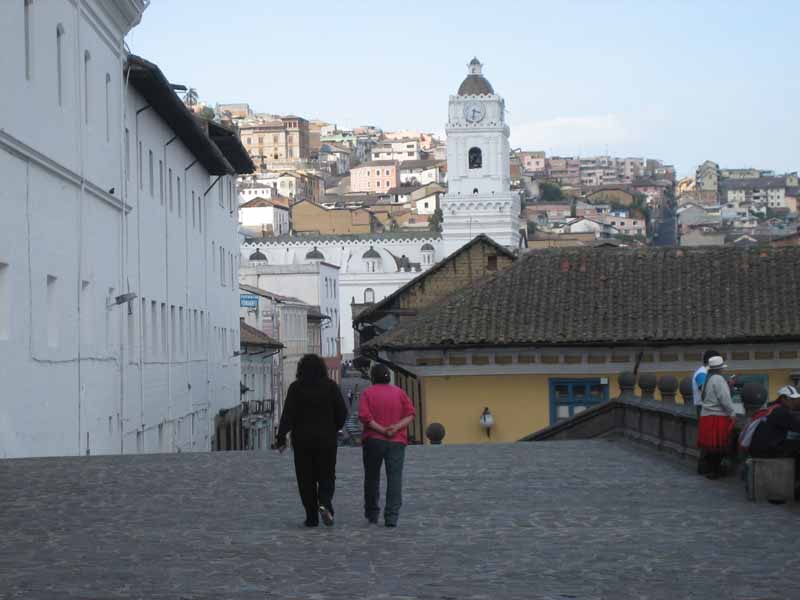| «Back to Previous Post |
Date: Wednesday, 12 November 2008 18:21 PST
Subject: Greetings from Rio Napo, Ecuador
Captions for Pictures:
1. Arriving at Sacha Lodge
2. Frog on our night hike
3. Canopy bridge
4-5. Wildlife viewing from atop the jungle canopy
6. “Jungle Cruise” through the water
7. Parrots at the salt lick
8. A Scarlet Macaw – a rare sight
9. Treehouse canopy that we visited on our final afternoon in the Amazon
10. Quito’s Old Town on our last day in Ecuador
9 November 2008
As I write this, Sandy and I are making our return trip upstream on the Rio Napo (Napo River) from the Sacha Lodge back to Coca, Ecuador – a distance of approximately 50 miles. We stayed at Sacha for the last four days. Sacha means “forest” in the local language. The reserve is 5,000 acres of primary rain forest. Though there is some farming nearby, as well as oil exploration, the rain forest’s ecosystem is relatively intact. A recent study focused on just 25 hectares (62 acres) of this region of the Amazon basin and found 1,150 animal species. This compares to a total of just 680 animal species in whole of North America! Some of the more interesting animals that we saw on our visit were toucans (three species), parrots (five species including the scarlet macaw), vulture, piranha, alligator, a three-toed sloth, monkeys (three species), frogs (three species), butterflies (at least 20 species) and tarantula.
Officially known as Puerto Francisco de Orellana, Coca (pop. 18,300; 2005 estimate) is the nickname for the frontier town in the northeast of Ecuador, 60 miles south of the Colombian boarder. Coca was the “jumping off point” for our adventure and one of the stops of the Spanish expedition as that first navigated the Amazon from the Andes to the Atlantic – a journey of 6,800 km (4,216 miles). The modern town of Coca was built by the oil companies to support oil exploration in the area. In recent years, it has taken on a life of its own. While there’s a road to Coca, it’s a 10-hour bus ride from Quito. We chose the 30-minute flight instead.
The Rio Napo is between 1 and 3km (0.62 to 1.86 miles) across. On one side, you can see the river build a sandbar while on the other side it cuts into the jungle pulling dirt, rocks and trees into the river. The resulting debris makes navigation “interesting” in that the captain of our boat has to constantly shifting from one side of the river to the other in order to avoid hazards. At times, a member of the crew will sit on the front of the boat to help navigate our longboat, using hand signals to communicate the location of shallow water or submerged logs to the captain. As we took the fast (30 mph) ride from Coca to Sacha, we saw one oil rig, several oil camps and at least forty small farms with a thatched hut or two. We also saw people bathing and washing their clothes on the banks of the slow moving, but mighty, Napo.
The Sacha Lodge was built on land purchased from the local Quechua community by a Swiss entrepreneur in 1986. The property is actually inland and it reached by a 25-minute walk and a 10-minute canoe ride across small lagoon. The structures on the property are artistically designed and constructed entirely of local materials. The main building has a stilted dining room on the first floor and a lounge with small library on the second. In the center of the second floor is a spiral staircase that leads up to a small viewing platform overlooking the lagoon and surrounding jungle. Elevated walkways radiate from the main building to the guest rooms. The rooms use only a peg to “lock” the door. Our room had a king-sized bed, a fan, bath with shower and a private balcony. All of the electricity was generated locally. At night, the sound of the animals and insects drown out the sound of the generator, the help and the other guests.
On the first evening, we met our naturalist and native guides. Oscar is Ecuadorian and went to university where he earned a degree in biology. He speaks both Spanish and excellent English. He has been leading tours in the area for more than 20 years (even before the resort was built). Our native guide is named Edison. All of the native guides have nicknames. Edison’s nickname is “Cabeza Loco” (rough translation “crazy head”). Edison speaks only Spanish. Our guides worked together to provide insight on our activities within the resort and inside the nearby Parque Nacional Yasuni. Edison “spotted,” meaning he looked for, birds, frogs, spiders as well as plants used by the native people. He was tall and slender and carried a long machete which he used to clear brush or hack open fruit and nuts. When Edison had something to say, he would first speak in Spanish and then Oscar would translate. We were joined by a nice couple in their twenties from Canada on all our activities.
Each day, we participated in up to three activities: one in the morning, another in the late afternoon (after the heat of the day had past) and one at night. After dinner on the first day, we took a night hike. It lasted for about an hour. We all brought flashlights which we used to light the muddy trails and to help us look for animals. Oscar had a floodlight which could reach to the top of most of the trees. It also carried a laser pen which he used to point out items of interest. That night, we found several frogs (one of them was huge!), a colorful beetle and a troupe of tiny night monkeys. Another activity was a late-afternoon jungle cruise. I swear it was the one that inspired Disney’s “Jungle Cruise” ride – except this one didn’t have any hippos (which, of course, are only found in Africa). I recorded video and Sandy took photos practically the entire time. It was just magical.
Sacha has a giant canopy viewpoint with two walkways suspended between three towers. It is 40m (130 ft) high. Walking up the stairs was a challenge for anyone who has a fear of heights. But, once you were at the top, it was a beautiful sight. We stayed there for about 2 ½ hours looking for birds. There is another tower which is build around a giant tree. It is about 30m (97 ft) high. The lagoon has several large alligators which we saw at night from during a canoe ride. We also hiked during a downpour along a boardwalk that was built through a swamp.
Beyond a doubt, the highlight of the trip was our trip to Parque Nacional Yasuni. We were awakened at 5am and had 30 minutes to get ready and make it to the main building for breakfast. We left at 6am just as the sun was rising. We took the canoe across the lagoon and walked to the Rio Napo where we re-boarded the longboat for the 30 minute ride downstream to the Napo Wildlife Center. Once there, we left the boat for a short hike to the first clay lick. (Parrots need the minerals contained in the clay to neutralize the toxins found in some of the seeds they eat.) We saw and heard lots of parrots. But none of them landed on the lick to consume the clay. After about an hour, we returned to the longboat and traveled back towards Sacha for five minutes to another trail.
The second hike was longer – about 20 minutes. The scenery was wonderful. And we saw a lot of birds on the way. As we got close to the end of the trail, we started to hear and then see the parrots and parakeets. We waited at hour or more here too. However, this time, the birds slowly made there way to the clay lick – first one bird, then five, then 20, 50 and finally, a hundred or more. The sound coming from so many birds was indescribable. There were about 50 people including birders (bird enthusiasts) as well as those dragged along for the ride. We all just gawked at the frenzy with our naked eyes (the lick was about 60 feet away), through binoculars and sighting scopes, as well as the displays of digital and video cameras. We’ll never forget it.
Ecuador is a special place. It contains a lot of history, friendly and honest people, as well as unique wild places. It is best known for the Galapagos Islands; but, it has so much more to offer. We have included a few pictures of Quito in this email which we toured on our last afternoon after our visit to Sacha Lodge. We hope you enjoyed our travelogue.
Until our next adventure,
Darren and Sandy
| «Back to Previous Post |


